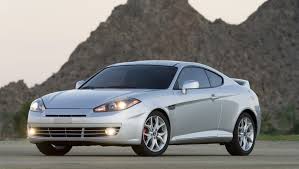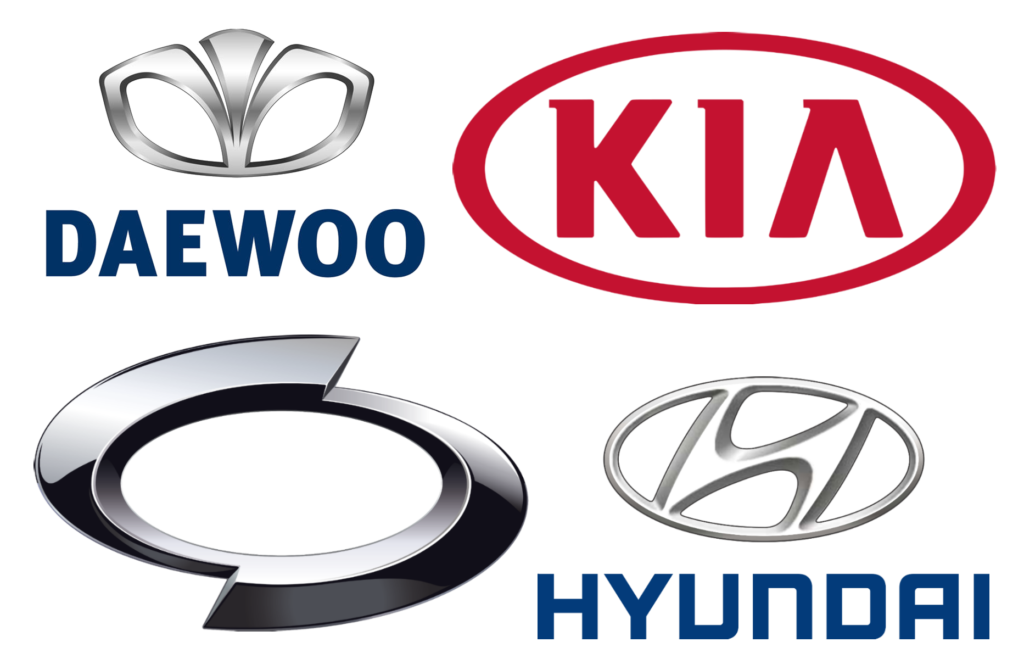
The Hyundai Tiburon, a sleek and sporty coupe that made waves in the global automotive market, owes much of its success to the design team behind it. First introduced in 1996 and continuing production until 2008, the Tiburon became known for its bold design, performance, and affordability, helping Hyundai establish a presence in the sports coupe market.
While the Tiburon’s engineering and performance aspects were vital, its design was perhaps the most captivating aspect of the car. The sleek lines, sporty curves, and aggressive stance of the Tiburon reflected a departure from Hyundai’s more conservative designs of the 1990s. Behind this transformation were several talented automotive designers and engineers who worked to create a car that would appeal to younger drivers and enthusiasts. This article delves into the lives and careers of the key designers responsible for the Tiburon’s iconic look.
1. Luc Donckerwolke: A Visionary Influence
One of the most prominent names associated with the Hyundai Tiburon is Luc Donckerwolke, a Belgian car designer who played a significant role in shaping Hyundai’s design language during the 2000s. While he wasn’t directly responsible for the initial Tiburon models, Donckerwolke’s influence is seen in the later iterations of the car, particularly the second-generation Tiburon (2002-2008), which is widely considered the more aggressive and visually striking version.
a) Luc Donckerwolke’s Early Life and Career:
Luc Donckerwolke was born in 1965 in Lima, Peru, though he is of Belgian descent. His international upbringing had a profound influence on his career, allowing him to bring a global perspective to automotive design. He graduated from the Art Center College of Design in Switzerland, a prestigious institution that has produced many of the world’s leading car designers.
Donckerwolke started his career at Peugeot before moving on to Audi, where he worked on notable projects such as the Audi A4 Avant and A8. However, his big break came when he joined Lamborghini. While there, Donckerwolke was responsible for designing some of Lamborghini’s most iconic models, including the Lamborghini Murciélago and Gallardo.
In 2015, Donckerwolke made a bold move by joining Hyundai Motor Group, where he took on a leadership role in shaping the design direction of Hyundai, Kia, and the luxury Genesis brand. While he joined Hyundai after the Tiburon had ceased production, his design philosophy of blending aggressive sportiness with refined elegance aligned with the Tiburon’s later iterations.
b) Legacy and Impact:
Donckerwolke’s design ethos has helped transform Hyundai into a major player in the global car market. His focus on creating visually stunning vehicles with strong road presence has influenced models like the Hyundai Kona, Genesis G70, and the modern Palisade SUV. Though not directly linked to the Tiburon’s inception, his later leadership and vision have undeniably shaped Hyundai’s evolution into a design-forward brand.
2. John Krsteski: The American Influence
While Luc Donckerwolke may be a prominent figure in Hyundai’s design history, another key individual who directly impacted the Tiburon’s design was John Krsteski. Krsteski is an American automotive designer who worked for Hyundai’s North American design studio during the development of the second-generation Tiburon.
a) John Krsteski’s Early Career:
John Krsteski has had a long and illustrious career in automotive design. He began his career with a degree from the College for Creative Studies in Detroit, a school known for producing many influential car designers. Krsteski initially worked for DaimlerChrysler, where he gained experience designing vehicles for the North American market, but his major contribution came when he joined Hyundai’s California Design Center.
b) Designing the Tiburon:
As part of the Hyundai team in California, Krsteski was tasked with creating a design that would appeal to the American market while maintaining the core identity of Hyundai. His work on the second-generation Tiburon (known as the Tuscani in South Korea) helped evolve the car’s design language into something more aggressive and angular. The flowing lines and pronounced front-end gave the Tiburon a sports car-like presence, making it stand out in the crowded compact sports coupe market.
Krsteski’s approach combined the sleek, youthful appeal that Hyundai wanted to promote with practical design considerations. He focused on crafting a dynamic, energetic vehicle that not only looked fast but offered affordable excitement for consumers who desired an entry-level sports car.
3. Hyundai’s Global Design Team: A Collaborative Effort
The success of the Hyundai Tiburon wasn’t solely the result of individual designers; it was the culmination of a global team effort that brought together diverse talents from South Korea, the United States, and Europe. Hyundai’s design studios, particularly its Global Design Center in Namyang, South Korea, and the California Design Studio, worked collaboratively to ensure that the Tiburon’s design appealed to a global audience.
a) SangYup Lee: Modern-Day Hyundai Design Leader:
While SangYup Lee is better known for his recent work as the head of Hyundai’s Global Design Center, his career and contributions to modern Hyundai design are noteworthy. Lee is a South Korean automotive designer with a rich history in global design houses. He worked with General Motors and Bentley Motors before returning to South Korea to lead Hyundai’s design team.
Though Lee did not work on the Tiburon, his leadership today carries forward the design legacy of blending practicality with emotion, something that the Tiburon captured in its time.
b) Peter Schreyer’s Influence:
Another key figure in Hyundai’s overall design strategy, though not directly linked to the Tiburon, is Peter Schreyer. Schreyer, a former Audi designer, was hired by Hyundai in 2006 to revolutionize its design language. His influence is seen in later models like the Hyundai Sonata and the Genesis line. Schreyer’s arrival at Hyundai marked the beginning of a more cohesive and mature design strategy, which aligned with the aesthetic sensibilities introduced in the second-generation Tiburon.
4. The Legacy of the Hyundai Tiburon
The Hyundai Tiburon may no longer be in production, but its legacy lives on as one of the key models that helped Hyundai transition from a budget automaker to a global powerhouse. The Tiburon’s design, particularly in its second-generation form, remains iconic for its boldness, affordability, and sportiness.
The design team behind the Tiburon played a critical role in this transformation. From the international influence of Luc Donckerwolke to the American sensibilities brought by John Krsteski, the Tiburon’s design was truly a collaborative global effort. The car’s distinctive look was a reflection of Hyundai’s ambitions to create something that could rival European and Japanese sports coupes while being accessible to everyday consumers.
Conclusion
The designers behind the Hyundai Tiburon represent a fascinating intersection of global automotive design talent. From Luc Donckerwolke’s European flair to John Krsteski’s American pragmatism, the Tiburon’s design was the result of a creative collaboration that reflected Hyundai’s evolving global presence. While the Tiburon is now a piece of Hyundai’s history, the legacy of its design lives on in the company’s continued commitment to innovation, style, and performance. Today, Hyundai’s design philosophy, shaped by the work of these individuals, continues to push boundaries in the automotive world.
